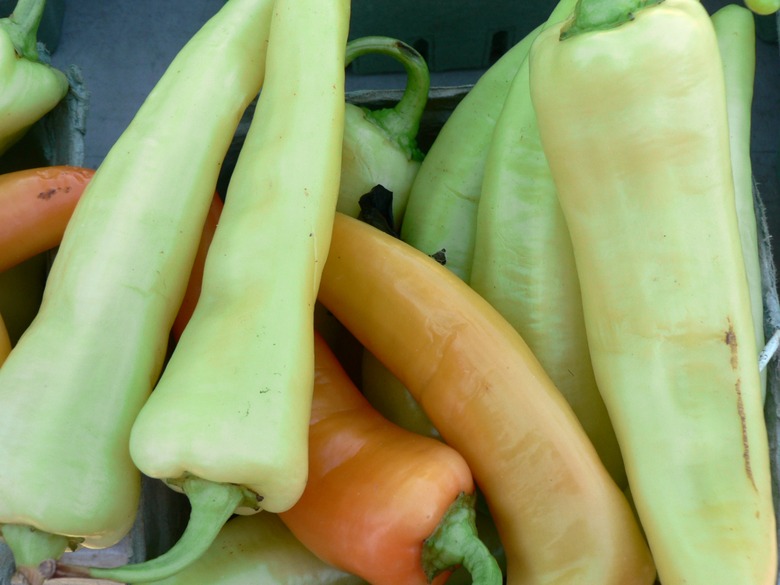When To Pick Hungarian Hot Wax Peppers?
If you like banana peppers but want a little more heat, you'll love Hungarian hot wax peppers (Capsicum annuum 'Hungarian Wax'). They grow as annuals in USDA zones 3 to 12, which is pretty much everywhere except the coldest northern regions, and the heat level compares to that of jalapeño peppers. If you leave them on the plant long enough, they can be as hot as 15,000 Scoville heat units (SHU) as opposed to a maximum of 8,000 for jalapeños. That sounds like a big difference, and it is, but it's nothing compared to the hottest peppers, which reach heat levels in the millions of SHUs.
In other words, Hungarian hot wax peppers deliver just enough heat to be interesting, and you can regulate the heat level depending on when you pick the Hungarian hot wax peppers. The longer the peppers stay on the plant, the hotter they become, so harvest early for mild pickling stock. That would be before the peppers have turned orange and are still yellow.
Tip
The longer Hungarian hot wax peppers stay on the plant, the hotter they become. If you prefer mild peppers, pick them while they're still yellow — about 70 days after planting.
Advantages of Picking Early
Advantages of Picking Early
Like all pepper plants, the Hungarian hot pepper plant needs plenty of sunlight — at least six hours of direct sun each day — so if you live in a northern climate zone, you'll want to wait for the gray days of winter to pass before planting them. The peppers take about 70 days to be ready for harvest, at which time they are still immature. If you pick the peppers at this time, they will be mild, and in an effort to produce seeds, the plant will produce more peppers. So, picking the peppers early confers two benefits: mild-tasting peppers and two or three harvests throughout the growing season.
You Like Them Hot
You Like Them Hot
Even Padron peppers, which are well-known for their mildness, can become uncomfortably hot if you leave them on the plant, and the same is true for Hungarian wax peppers. The peppers gradually turn red, and as you bite into the waxy, crunchy skin, your senses will be quickly overtaken by the higher concentration of capsaicin. Leave the peppers even longer and they will produce seed for next year's crop, if you're growing heirlooms, which come true from seed. Both of these are benefits depending on your taste preferences.
If you want the best of both worlds, it's a good idea to grows more than one plant. That way, you can harvest the mild peppers throughout the growing season and still have hot peppers for spicing up your chili, and you can save seeds for propagation. If you go this route, space the plants 18 to 24 inches apart to give them room to spread out.
Tips for Planting Peppers
Tips for Planting Peppers
Peppers like it warm, so if you're planting them in the spring, it's a good idea to mulch the soil at least one week before planting to allow it to warm up. You can grow pepper plants in containers, but keep in mind that they grow about 24 inches high, so be sure to give them plenty of head room. The peppers tend to be heavy, so it's a good idea to stake the branches to prevent them from breaking.
Pepper plants are easy to grow, but they need plenty of water, and they also need to be on well-draining soil to prevent the roots from getting waterlogged. Fertilize moderately but don't overdo it or the plants will grow lush foliage but undersized peppers.
